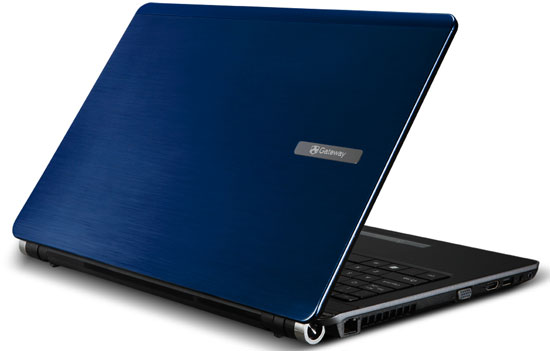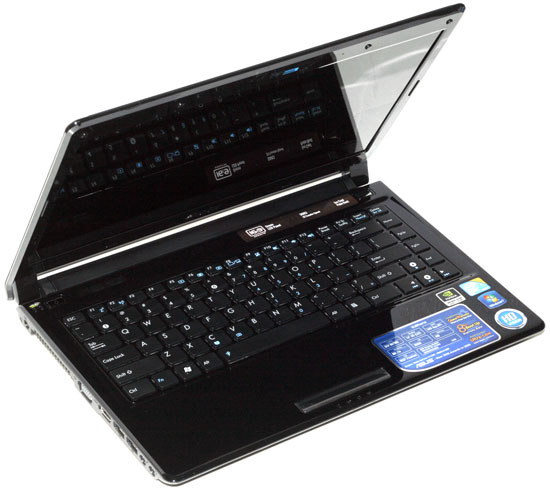Mobile Buyers' Guide, December 2009
by Jarred Walton on December 6, 2009 12:00 AM EST- Posted in
- Guides
Entry Level Laptops - $400 to $850
The next step up the pricing ladder opens up some additional possibilities, along with upgraded versions of the sub-$400 options. Some of the upgrades are more useful than others - more RAM or a larger hard drive is something you can add at any time to just about any laptop. A faster GPU, on the other hand, is something you either have for the life of a laptop or you don't. To date, no one has successfully implemented a laptop where you can upgrade the graphics as newer GPUs become available. Besides, even at $800 you shouldn't expect to get a good gaming laptop; you'll need to move to the next category for that.
Intel CULV Revisited
For us, by far the most interesting laptops in this price bracket are the many CULV offerings. With the additional pricing headroom, we are able to add quite a few options beyond the basic Celeron SU2300. Pentium SU4100 doubles the L2 cache to 2MB shared, with a 1.3GHz clock speed. The Core 2 SU7300 and SU9000 chips move to 3MB of shared cache; the SU7300 is clocked at 1.3GHz while the SU9300 is 1.2GHz, the SU9400 is 1.4GHz, and the SU9600 is 1.6GHz. These CPUs are faster than the SU2300, yes, but they do increase the cost of laptops quite a bit. Since the CPUs aren't upgradeable, however, getting a faster CPU may be a worthwhile investment.
Along with upgraded CPUs, CULV laptops are available in sizes ranging from 11.6" up to 15.6", with 13.3" and 14.0" models in between. Most of these laptops offer the same 1366x768 resolution, so it's a matter of getting a larger keyboard and pixels. The 14" and larger options also include optical drives on most models.
Storage and memory options also receive upgrades, with 3GB and 4GB RAM configurations and hard drive sizes ranging from 250GB to 500GB. Unless price considerations prevent it, we recommend 4GB models so you won't have to worry about memory upgrades. We also recommend trying to get a DDR3-based laptop rather than DDR2, since DDR3 uses less power (voltage) and thus improves battery life (all other areas being equal). Hard drives are all basically the same, unless you move to SSDs. If you want an SSD in place of a conventional HDD, consider adding the drive on your own after purchase - most vendors continue to charge a premium for factory installed SSDs, and if you're not careful you could get one of the less desirable SSDs where performance substantially degrades over time.

What CULV laptops do we like? We've got Acer Timeline 1810 and Gateway EC5409u reviews in the works (aluminum cover = yummy!), and both the Acer Timeline and Gateway EC lines are good options (provided you stick with dual-core models). We also have the Dell Inspiron 11z undergoing testing. The systems we've tested all meet the advertised battery life figures (6+ hours), albeit mostly in less demanding tests.
There's also the Lenovo U Series, which appears slightly more expensive but we know a lot of people who like the Lenovo aesthetic. You can pretty much choose any of these laptops based on features and price and you'll get a good long-battery-life laptop.
Our Favorite CULV Laptop

Another laptop we're reviewing is the ASUS UL80Vt. It improves upon the competition in a number of ways. First, ASUS allows CPU overclocking, taking the SU7300 from 1.30GHz up to 1.73GHz - a 33% overclock. This will reduce battery life by about 10% at most; it's 5% or less in more demanding tests, which is a fair trade.
The second big feature is that ASUS includes integrated GMA 4500MHD graphics as well as GeForce G210M discrete graphics, with the ability to switch between the two options on the fly (it takes about three seconds to turn off the discrete GPU and 15 seconds to turn it back on). The G210M isn't a high-performance gaming solution, but when combined with the overclocked SU7300 it will handle nearly any current title, albeit at lower detail settings.
Perhaps the biggest selling point of the UL80Vt is its stellar battery life, helped by an 83Wh battery. Running at stock CPU speed and using the integrated graphics, we have achieved idle battery life of up to 14 hours and Internet battery life of around 8.5 hours. Nothing else we've seen can come close to the flexibility and battery life.
The UL80Vt cost is quite a bit higher than competing solutions, and the laptop isn't "perfect". At just over $800, we feel that the poor contrast ratio (like most other laptops) could have easily been improved. The chassis build quality is also somewhat questionable, showing more flex and torque than we'd like, but it's not bad by any means. All of the other features make the UL80Vt a great laptop. Our full review is still in the works, but the UL80Vt has earned an Editors' Choice award and is currently our favorite laptop in the ~$800 price range.










49 Comments
View All Comments
JarredWalton - Monday, December 7, 2009 - link
I've placed an order... I'll do a review if they work well.yacoub - Sunday, December 6, 2009 - link
http://i.i.com.com/cnwk.1d/i/bto/20091118/by-manf....">http://i.i.com.com/cnwk.1d/i/bto/20091118/by-manf....I can't find the initial article anymore but this just came out a couple weeks ago.
http://news.cnet.com/8301-17938_105-10400447-1.htm...">http://news.cnet.com/8301-17938_105-10400447-1.htm...
HP had the most quality issues, Asus the least.
Blahman - Sunday, December 6, 2009 - link
If you thought the UL80Vt was good, check out its newer slimmer brother: the UL30Vt. It shares all the same specs, but better build quality and all packed into a thinner, lighter chassis.It's available from Amazon for $800. The reviews so far are very positive.
http://www.amazon.com/UL30Vt-X1-13-3-Inch-Laptop-W...">http://www.amazon.com/UL30Vt-X1-13-3-In...ctronics...
trickdaddy111m - Tuesday, December 8, 2009 - link
The UL30Vt does look very nice, but it lacks discrete graphics and the Turbo function of the UL80Vt. So, "same specs" is not accurate.KikassAssassin - Wednesday, December 9, 2009 - link
The UL30Vt has turbo and the discrete graphics. The specs are exactly the same as the UL80Vt except it has a 1" smaller screen, no optical drive, and a slightly smaller battery.You're probably looking at the UL30A.
KikassAssassin - Sunday, December 6, 2009 - link
The UL30Vt looks like a really nice alternative if you want something lighter than the UL80Vt and you don't need an optical drive. Unfortunately, the UL30Vt on Amazon is the X1 model that only has a 4400 mAh battery, compared to the UL80Vt-A1's 5600 mAh battery, so it'll only have about 80% of the battery life. The battery life should still be excellent, just not quite as amazing as the UL80Vt'stechwriters4breakfast - Sunday, December 6, 2009 - link
atom 2arrandale
bsoft16384 - Sunday, December 6, 2009 - link
I just want to give another shout out for the Acer 1410. This is an absolutely fantastic notebook for $400.I have the single-core version (Core 2 Solo SU3500, 1.4GHz, 3M cache) so it's somewhat faster on single-threaded code but slower on multi-threaded code than the Celeron SU2300 (1.2GHz, 1M cache). That said, I have no performance complaints about the laptop.
GPU performance is, as you would expect, pretty bad. But it's still dramatically ahead of a GMA950-based netbook (around 5X by my estimations), which makes it fine for playing older titles like Warcraft III, CS 1.6, UT classic or 2004, Quake 3 / OpenArena, Half-Life.
Even WoW runs "OK" on the Acer 1410, as long as you're willing to deal with ~20-30 FPS and a slideshow in Dalaran. But you *can* run it, and it's fine for doing dailies or checking the AH. I have my desktop if I want to play for real.
The keyboard is excellent, except for the page up/down buttons (which are annoyingly above the arrow keys) and home/end (combined with page up / down). Other than those annoyances, the keyboard is full-sized and has the layout that you would expect.
The screen is decently bright; contrast is "OK" but not great, and the viewing angle is lame (but so are most laptops). It's easily better than my ThinkPad T61.
There are some surprises port-wise: the 1410 has HDMI (with 8-channel LPCM audio) and the audio-out port does SPDIF/TOSLINK (with a 3.5mm to TOSLINK adapter), neither of which are common on a $400 laptop.
The WiFi is Intel 5100 802.11n, which is also nice. Ethernet is Atheros, audio is Realtek.
As you would expect with an ULV notebook, the 1410 doesn't really ever get hot, even at 100% CPU / GPU. It's not particularly noisy either, unless you have a defective fan (as my first one from Amazon did).
The 1410 takes forever to charge from empty (2.5 hours if off, 3-4 if on). That's because it uses the same 30W power supply as the Aspire One. On the other hand, the power adapter is very small and decently cheap, both of which are pluses.
Battery life is 5-6 hours, depending on how hard you push the machine. At idle, at minimum brightness, Windows reports over 12 hours, but you can't achieve this in practice. With light web browsing and Flashblock, expect 6+ hours.
The touchpad is Synaptics, and does multi-touch.
This system is the smallest, lightest system that I would consider a 'notebook' rather than a 'netbook'. I considered the HP Mini 311, but it maxes out at 3GB and doesn't support x86-64 or virtualization, plus the Core 2 Solo beats the pants off of the Atom. NVIDIA ION isn't really a whole lot better than the GMA X4500MHD, because the Atom CPU prevents you from playing any modern games anyway and the GMA X4500 does fine for Windows Aero and HD video acceleration.
Two years ago the Aspire 1410 would have cost $2000 and would be called an 'ultralight'. Today it's $400.
Keeir - Wednesday, December 9, 2009 - link
Don't forget its slightly more expensive brotherTimeline 1810T-8
Core 2 Duo (SU7300), 4 Gigs of Ram, Bluetooth, Larger HD, same wieght and battery
Picked mine up for <600 from Amazon (though I see they have ballons to close to 700)
notanakin - Monday, December 7, 2009 - link
Unfortunately this guide came out just a few days too late, but fortunately I'd settled on the Acer 1410 (SU2300) and it's a nice little machine. Certainly fast enough for simple tasks and for my old eyes the screen size is better than the 10.1 inchers.Here's a very useful link to a table of laptops/CPUs/Screen size prepared for the recent PC Show in Singapore where I bought the laptop. Great for doing some quick comparisons.
(Prices are in Singapore $ - about US$1=S$1.4, so the prices are a bit more expensive than in the USA, but they give some discounts off the published price and throw in stuff - I got an external DVD-writer plus a few smaller things with the Acer.)
But how I HATE the glossy screen. Are they cheaper than matte screens or what? I'd gladly pay US$50 more for a matte screen.